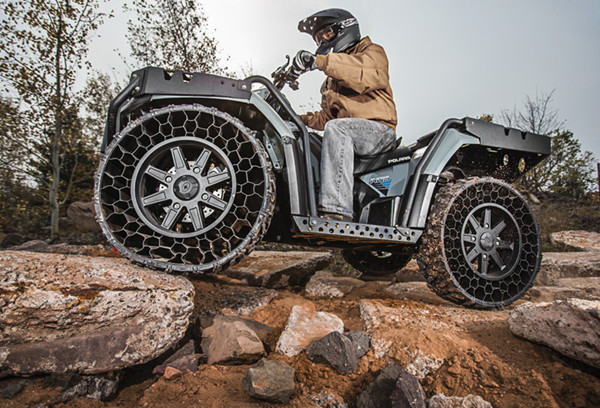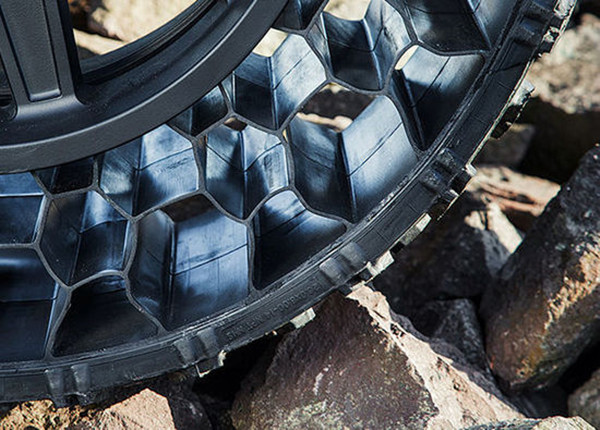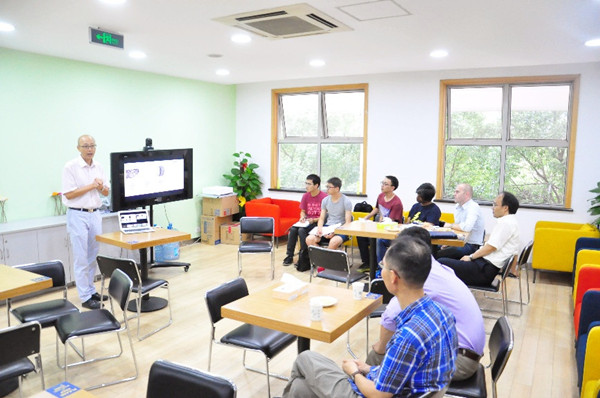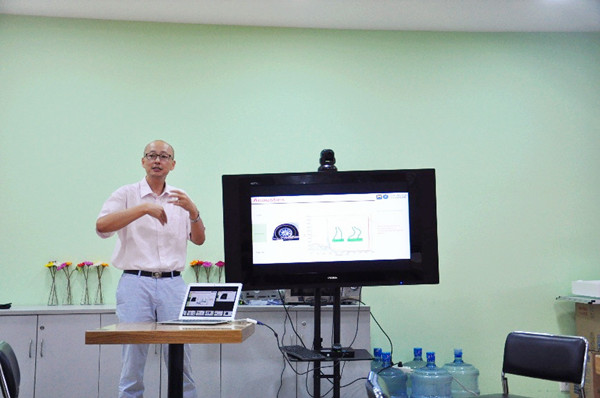In order to help the public discover the mystery of scientific research, JI has launched a series of mini-workshop to introduce faculty’s research.
At a recent mini-workshop, Professor Jaehyung Ju gave talk on “Non-pneumatic Tires: Past, Present and Future” which invoked an enthusiastic discussion.

 Non-pneumatic tires’ puncture-free characteristic makes them great for outdoor cross-country and military use.
Non-pneumatic tires’ puncture-free characteristic makes them great for outdoor cross-country and military use.

 Professor Jaehyung Ju introducing non-pneumatic tires
Professor Jaehyung Ju introducing non-pneumatic tires
During the lecture, Professor Ju introduced the recent achievements in non-pneumatic tire research, including improvement in the tires’ structure, rigidity, flexibility, distribution of contact pressure and rolling resistance. With their significant advantages in safety, intelligent structure and environmental issues, non-pneumatic tires are expected to become the next generation of smart tires. Faculty and students attending the mini-workshop were impressed and had enthusiastic discussions about fluid dynamics, microstructure and the connection between tire and wheel hub. Professor Shane Johnson expressed his strong interest and desire for cooperation. He hoped to apply for a joint project with Professor Ju on non-pneumatic tire research in the future.
The JI Mini-workshop aims to promote scientific research exchange and collaboration among JI faculty members and researchers. We will continue to introduce their research topics, so stay tuned!





